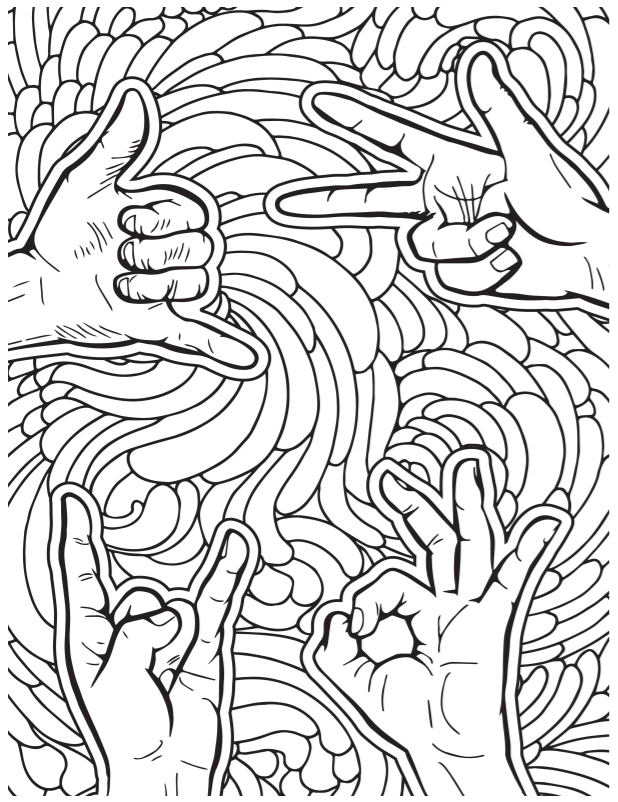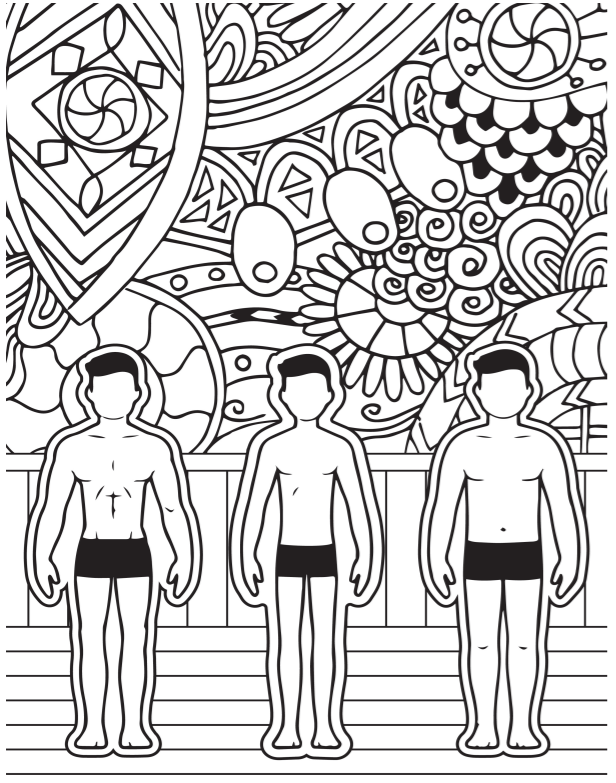5.4: Chapter Wrap-Up
- Last updated
- Save as PDF
- Page ID
- 115945

- Jason S. Wrench, Narissra M. Punyanunt-Carter & Katherine S. Thweatt
- SUNY New Paltz & SUNY Oswego via OpenSUNY
In this chapter, we discussed the importance of nonverbal communication. To be an effective nonverbal communicator, it is necessary to understand that nonverbal communication conveys a tremendous amount of information. However, the meaning of nonverbal communication most often must be understood within the context of the interaction. There are very few nonverbal behaviors that can be understood outside of context.
This chapter also discusses the functions of nonverbal communication. Nonverbal communication serves many purposes and works to clarify the meaning of verbal communication. Verbal communication and nonverbal communication, in combination, increase the chances of stimulating accurate meaning in the minds of others. One without the other dilutes the effectiveness of each.
Finally, this chapter discusses the subcategories of nonverbal communication. The subcategories of nonverbal communication allow us to account for the multitude of cues sent between the sender and receiver. The human brain must account for cues resulting from eye contact, facial expressions, distance between sender and receiver, touch, sound, movement, and scent. Amazingly, the human brain processes all of these cues very quickly and with a high degree of accuracy
End of Chapter
Key Terms
- Accent • Affect Displays • Attribution Error • Complement • Contradict • Dysfluencies • Emblems • Eye Gaze • Haptics • Illustrators • Inflection • Intensity • Kinesics • Nonverbal Vocalization • Oculesics • Olfactics • Paralanguage • Pitch • Proxemics • Regulate • Regulators • Repeat • Rhythm • Substitute • Tempo • Timbre • Verbal Surrogates • Vocalics
Read World Case Study
Addie was assigned a roommate for her freshman year in college. Addie noticed that her roommate didn’t make much eye contact, avoided touch, and didn’t smile very often. After a few weeks, Addie noticed that her roommate began to look at her more when talking and smiled when she came into the room. Meanwhile, Addie made friends in some of her classes and invited them to her room to study. Addie’s roommate didn’t look at anyone and didn’t smile. Addie’s friends complained that her roommate didn’t like them and that she was a little strange.
What information might Addie provide to her friends to give them insight into Addie’s behavior?
The roommate’s nonverbal behavior may have consequences for her in social settings. Is it her responsibility to adapt her nonverbal communication or the responsibility of those around her to try to understand that she is simply different?
End of Chapter Quiz
- If Mary stomps her foot while saying, “No, I won’t go with you.” Which function of nonverbal communication is she using?
a. Complementing
b. Accenting
c. Repeating
d. Contradicting
Substituting - Ronnie says “ummm” frequently when speaking. This aspect of vocalics is referred to as _____.
a. Pitch
b. Rate
c. Disfluency
d. Disconnection
e. Pause - Choose the best example of an emblem.
a. Using two fingers in the shape of a V to sign “Peace”
b. Shaking of the head to say no
c. Pointing in the air while saying up
d. Rubbing your stomach while saying yum
e. Making a cradle with the arms when saying baby - What is the difference in the repeating function of nonverbal communication and the complementing function of nonverbal communication?
a. Complementing nonverbal behavior can stand alone, whereas repeating cannot.
b. Repeating nonverbal communication can stand alone, whereas complementing cannot.
c. Repeating behaviors are more useful than complementing nonverbal communication.
d. There is no difference between complementing and repeating nonverbal behavior.
e. Repeating behaviors are more culturally appropriate in the U.S. - Which function of nonverbal communication is best represented when the nonverbal behavior is the opposite of verbal communication?
a. Complementing
b. Repeating
c. Accenting
d. Substituting
e. Contradicting - _____ is the study of how use of space communicates.
a. Haptics
b. Oculesics
c. Chronemics
d. Proxemics
e. Kinesics - _____ is the study of how touch communicates.
a. Haptics
b. Oculesics
c. Chronemics
d. Proxemics
e. Kinesics - If Lacey is standing within 18 inches of her friend, she is standing in which of Hall’s distances?
a. Personal
b. Intimate
c. Social
d. Public
e. Parallel
Resources
1 Eckman, P and Friesen, W.V. (1969). Head and body cues in the judgement of emotion: A reformulation. Perceptual and Motor Skills, 24, 711-724.
2 Satell, G. (Feb 6, 2015). Why communication is today’s most important skill. Retrieved on December 1, 2018 www.forbes.com/sites/gregsat.../#768491331100
3 Ross, L. (1977). “The intuitive psychologist and his shortcomings: Distortions in the attribution process”. In Berkowitz, L. Advances in experimental social psychology. 10. Academic Press. pp. 173–220.
4 Mehrabian, A. (1971). Silent messages. Wadsworth.
5 Birdwhistell, R. L. (1970). Kinesics and context: Essays in body motion communication. University of Pennsylvania Press, p. xiv.
6 Philpott, J. S. (1983). The relative contribution to meaning of verbal and nonverbal channels of communication: A meta-analysis. Unpublished master’s thesis. University of Nebraska.
7 Dolcos, S., Sung, K., Argo, J. J., Flor-Henry, S., & Dolcos, F. (2012). The power of a handshake: Neural correlates of evaluative judgments in observed social interactions. Journal of Cognitive Neuroscience, 24(12), 2292-2305. https://doi.org/10.1162/jocn_a_00295; pg. 2303.
8 Punyanunt-Carter, N. M., & Wrench, J. S. (2009). Development and validity testing of a measure of touch deprivation. Human Communication, 12, 67-76.
9 Napper, L. E., Montes, K. S., Kenney, S. R., & LaBrie, J. W. (2016). Assessing the personal negative impacts of hooking up experienced by college students: Gender differences and mental health. The Journal of Sex Research, 53(7), 766-775. https://doi.org/10.1080/00224499.2015.1065951
10 Eckman, P and Friesen, W.V. (1969). Head and body cues in the judgement of emotion: A reformulation. Perceptual and Motor Skills, 24, 711-724.
11 Sacco, D. F., & Brown, M. (2018). Preferences for facially communicated big five personality traits and their relation to self-reported big five personality. Personality & Individual Differences, 134, 195–200. doi. org/10.1016/j.paid.2018.06.024
12 Bente, G., Donaghy, W. C., & Suwelack, D. (1998). Sex differences in body movement and visual attention: An integrated analysis of movement and gaze in mixed-sex dyads. Journal of Nonverbal Behavior, 22(1), 31–58. https://doi.org/10.1023/A:1022900525673
13 Knapp, M. L., & Hall, J. A. (2002). Nonverbal communication in human interaction. Thomson Learning.
14 Burgoon, J. K., Buller, D. B., & Woodall, W. G. (1996). Nonverbal Communication. McGraw-Hill.
15 Ibid.
16 Poyatos, F. (2002). Nonverbal communication across disciplines. (Volume 1: Culture, sensory interaction, speech conversation). John Benjamins.
17 Goldin-Meadow, S. (2005). The two faces of gesture: Language and thought. Gesture, 5(1-2), 241-257. https://doi.org/https://doi.org/10.1...gest.5.1.16gol
18 Hall, E.T. (1969). The hidden dimension. Doubleday.
19 Bruneau, Thomas J. (1980). Chronemics and the verbal-nonverbal interface. In M. R. Key (Ed.), The relationship of verbal and nonverbal communication (pp. 101-119). Mouton Press.
20 U.S. air fresheners market analysis by product type (aerosol/spray, electric air fresheners, gels, candles, others) by application (residential, commercial, cars, others), competitive analysis and segment forecasts, 2018 – 2025. Accessed December 1, 2018 www.grandviewresearch.com/in...eshenersmarket
21 Ivy, D. K., & Wahl, S. T. (2019). Nonverbal communication for a lifetime (3rd ed.). Kendall-Hunt; pg. 155.
22 Sheldon, W. H. (1940). The varieties of human physique. Harper and Brothers.
23 Ryckman, R. M., Robbins, M. A., Kaczor, L. M., & Gold, J. A. (1989). Male and female raters’ stereotyping of male and female physiques. Personality and Social Psychology Bulletin, 15(2), 244–251. doi. org/10.1177/0146167289152011
24 Sobczak, C. (2014). embody: Learning to love your unique body (and quiet that critical voice). Gürze; pg 18. https://tinyurl.com/sarp4mq
25 Ibid., pgs. 18-19.
26 Ibid. pg. 23.
27 Markets & Markets. (2017, October). Weight loss and weight management market by equipment (surgical equipment (biliopancreatic diversion, gastric bypass), fitness (treadmill, elliptical, stair stepper)), diet (meal, beverage, supplement) and weight loss services - global forecast to 2022. Retrieved February 16, 2020: https:// tinyurl.com/sdedpls
28 Mann, T., Tomiyama, A. J., Westling, E., Lew, A.-M., Samuels, B., & Chatman, J. (2007). Medicare’s search for effective obesity treatments: Diets are not the answer. American Psychologist, 62(3), 220–233. doi. org/10.1037/0003-066X.62.3.220
29 Dombrowski, S. U., Knittle, K., Avenell, A., Araújo-Soares, V., & Sniehotta, F. F. (2014). Long term maintenance of weight loss with non-surgical interventions in obese adults: systematic review and meta-analyses of randomised controlled trials. BMJ : British Medical Journal, 348, g2646. doi.org/10.1136/bmj.g2646
30 Skerrett, P. J. (2013, September 24). Overweight and healthy: the concept of metabolically healthy obesity. Harvard Health Publishing. https://tinyurl.com/yxxtfsvm
31 Sobczak, C. (2014). embody: Learning to love your unique body (and quiet that critical voice). Gürze; pg. 81. https://tinyurl.com/sarp4mq
32 Walster, E., Aronson, V., Abrahams, D., & Rottman, L. (1966). Importance of physical attractiveness in dating behavior. Journal of Personality and Social Psychology, 4(5), 508–516. https://doi.org/10.1037/h0021188
33 Berscheid, E., Dion, K., Walster, E., & Walster, G. W. (1971). Physical attractiveness and dating choice: A test of the matching hypothesis. Journal of Experimental Social Psychology, 7(2), 173–189. doi. org/10.1016/0022-1031(71)90065-5
34 Shepherd, J. W., & Ellis, H. D. (1972). Physical attractiveness and selection of marriage partners. Psychological Reports, 30(3), 1004. https://doi.org/10.2466/pr0.1972.30.3.1004
35 Carmalt, J. H., Cawley, J., Joyner, K., & Sobal, J. (2008). Body weight and matching with a physically attractive romantic partner. Journal of Marriage and Family, 70(5), 1287-1296. doi.org/10.1111/j.1741- 3737.2008.00566.x
36 Mehrabian, A. (1972). Nonverbal communication. Aldine Publishing Company.
37 Richmond, V. P., Smith, R. S., Heisel, A. D., & McCroskey, J. C. (2001). Nonverbal immediacy in the patient/physician relationship. Communication Research Reports, 18(3), 211-216. doi. org/10.1080/08824090109384800
38 LaBelle, S., Odenweller, K.G., Myers, S.A. (2015). Applying instructor communication behaviors and learning outcomes to the pediatrician-parent context. Southern Communication Journal, 80(1), 55-73. https:// doi.org/10.1080/1041794X.2014.981284.
39 Conlee, C. J., Olvera, J., & Vagim, N. N. (1993). The relationships among physician nonverbal immediacy and patient satisfaction with hospital care: Results of an analysis with a novel instrumental variable. Health Research and Educational Trust, 43(5), 1505-1519. doi.org/10.1111/j.1475-6773.2008.00849.x
40 Wanzer, M. B., Booth-Butterfield, M., & Gruber, K. (2004). Perceptions of health care providers’ communication: Relationships between patient-centered communication and satisfaction. Health Communication, 16(3), 363-384. https://doi.org/10.1207/S15327027HC1603_6
41 Paulsel, M. L., McCroskey, J. C., & Richmond, V. P. (2006). Perceptions of health care professionals’ credibility as a predictor of patients’ satisfaction with their medical care and physician. Communication Research Reports, 23(2), 69-76. https://doi.org/10.1080/08824090600668832
42 Paulsel, M. L., Richmond, V. P., McCroskey, J. C., & Cayanus, J. L. (2005). The relationships of perceived health professionals’ communication traits and credibility with perceived patient confidentiality. Communication Research Reports, 22(2), 129-142. https://doi.org/10.1080/00036810500130588
43 LaBelle, S., Odenweller, K. G., & Myers, S. A. (2015). Applying instructor communication behaviors and learning outcomes to the pediatrician-parent context. Southern Communication Journal, 80(1), 55-73. https:// doi.org/10.1080/1041794X.2014.981284
44 Ibid.
45 Richmond, V. P., Smith, R. S., Heisel, A. D., & McCroskey, J. C. (2001). Nonverbal immediacy in the patient/physician relationship. Communication Research Reports, 18(3), 211-216. doi. org/10.1080/08824090109384800
46 Ibid.
End of Chapter Quiz Answer Key
- B
- C
- A
- B
- E
- D
- A
- A



